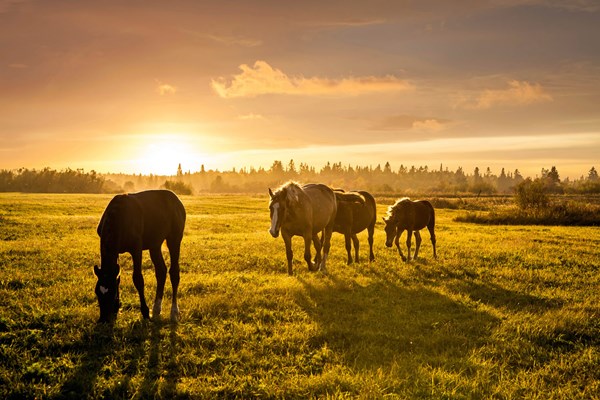 Credit: Thinkstock
Credit: ThinkstockAs temperatures begin to dip, Juliet Getty, PhD, equine nutrition specialist, wants your horse to make the transition to winter feeding in good shape, and that means understanding about the sugar and starch that lurk in your fall pasture growth.
If you have horses that are overweight, insulin resistant or suffer from equine Cushing’s disease, you know about keeping them off of spring grasses. The non-structural carbohydrate (NSC) content is too high for free-choice grazing to be safe, increasing the risk for laminitis. But don’t think you’re out of the woods once spring is over. True, summer is safer, but as early fall nights cool down below 40 degrees F for the majority of the night, the dangerous carbohydrates once again increase.
Grass accumulates NSC (sugars and starch) as it is exposed to sunlight. The levels reach a peak in the late afternoon. During the dark hours, the grass uses this fuel for itself, and by morning, the levels are at their lowest. But cold nights prevent grass from using as much NSC, resulting in a higher NSC concentration during the day.
Don’t be fooled by the brown grass you see in the late fall. Spread it apart and you’ll likely see some green at the base, which is high in sugar and starch. If it hasn’t rained in a while, your grass will look dried out; but be careful–dry grass can actually have a higher NSC percentage than long, lush-looking grass.
Testing your pasture every couple of weeks may be a good option this time of year. Equi-Analytical Labs offers their economical “Fast Track” test that provides sugar and starch levels. Though just a snapshot of what is happening to the grass at that moment in time, consistent testing will provide a trend that may offer some peace of mind in determining when the grass has gone dormant for the winter.
Juliet M. Getty, PhD, is an independent equine nutritionist with a wide U.S. and international following. Her research-based approach optimizes equine health by aligning physiology and instincts with correct feeding and nutrition practices. Find a world of useful information for the horseperson at www.GettyEquineNutrition.com. Sign up for Getty’s informative, free e-newsletter, Forage for Thought; browse her library of reference articles; search her nutrition forum; and purchase recordings of her educational teleseminars. Reach Getty directly at gettyequinenutrition@gmail.com. She is available for private consultations and speaking engagements.


